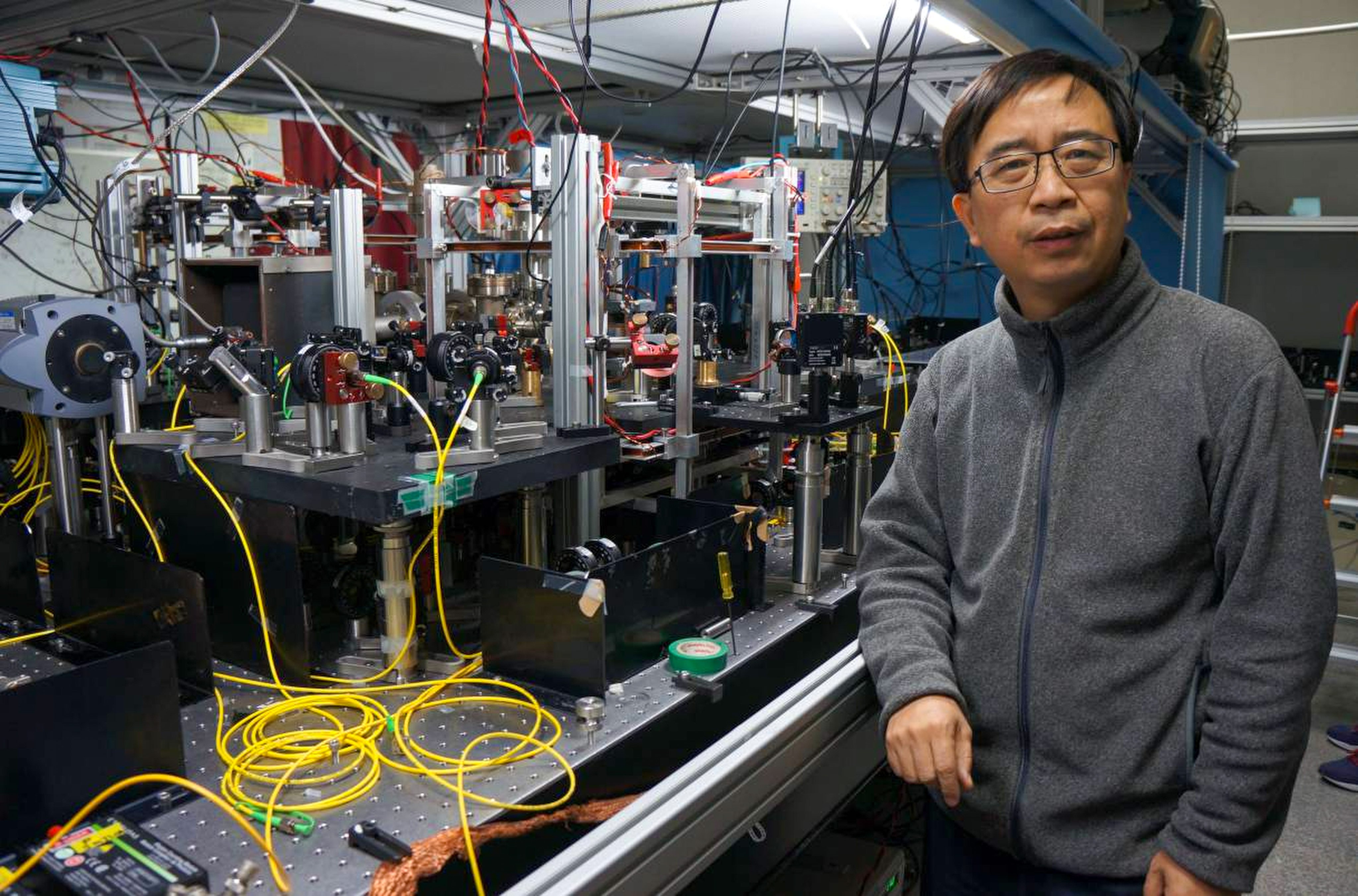China is developing the world’s first high-orbit quantum communication satellite to enable more efficient, globally accessible quantum networks and lay the groundwork for redefining the international standard of the second, according to Pan Jianwei, the country’s “father of quantum”.
Set to launch around 2027, the satellite will operate in geostationary orbit more than 35,000km (21,700 miles) above the Earth, Pan revealed during a pre-recorded keynote speech at a conference in Germany this month to mark the centenary of quantum mechanics.
The satellite will carry an optical atomic clock and serve as a new platform for quantum metrology research, including efforts to improve the short-term stability of atomic clocks through global entanglement distribution, and potentially pave the way for a redefinition of the International System of Units (SI) base unit of time – the second.
The satellite – named Dawn – follows Micius, the world’s first quantum satellite that was launched into low Earth orbit in 2016 by Pan’s team at the University of Science and Technology of China.
Pan revealed the satellite’s name during a live Q&A session with more than 300 quantum physicists, including four Nobel laureates, who gathered on the island of Helgoland for the week-long meeting. Dawn was designed to extend entanglement distribution distances to over 10,000km, he said.
“A high-orbit satellite is incredibly powerful. It can simultaneously see two locations on Earth that are 10,000km apart,” he told state broadcaster CCTV in May. “That makes it possible for us to establish key distributions between Beijing and South Africa.”
Entanglement distribution from high orbit could also take place around the clock, thanks to the satellite’s stationary position over Earth. “That provides continuous coverage and ensures secure communications 24/7,” Pan told Chinese state broadcaster CCTV.
He had previously told Chinese media that long-distance quantum communication through fibre-optic cables was limited by signal loss.
Even with today’s most advanced photon detectors, it has been estimated that transmitting quantum information over 1,000km of fibre would be so inefficient that it might take 300 years to send the equivalent of one bitcoin.
In contrast, light can travel through the vacuum of space without significant loss – an insight that led to the idea of using satellites as relays for global quantum communication.
In 2005, Pan’s team demonstrated this potential by sending entangled photons over 13km of open air. The photons maintained their quantum properties after passing through the Earth’s atmosphere, proving that space-to-ground quantum links were possible.
Micius, which operates at an altitude of about 500km, provides limited ground coverage and short contact windows – about nine minutes per pass over a ground station. In comparison, a geostationary satellite such as Dawn stays fixed over a single point on Earth, offering broader and uninterrupted coverage.
Still, Dawn will face some of the same technical challenges. Pan told conference participants that due to photon loss over long distances, the satellite would not yet support device-independent quantum communication – an advanced form of encryption that remained secure, even if the hardware used was untrusted or imperfect.
Pan also revealed plans to launch a constellation of low-orbit quantum satellites. Meanwhile, his team is pursuing an even more ambitious project: a quantum experiment between Earth and the moon, he said.
First proposed in 2018, the plan involves placing an entangled photon source at a gravitational balance point between Earth and the moon – such as a Lagrange point – and sending one photon of each pair to Earth and the other to the moon.
This set-up would allow a so-called Bell test, an experiment that checks whether quantum entanglement can be explained by classical physics or hidden variables. Because light takes just a little over a second to travel between Earth and the moon, any attempt at classical coordination between the two ends would be too slow – helping rule out such explanations.
Pan said his team’s photon sources and distribution systems were now powerful enough to support a quantum link over that distance. The next step was to build a communications link in lunar orbit to carry out the experiment.
While the plan awaited approval within China’s official space programme, the team hoped to conduct the test between 2030 and 2035, he said.
Passionate about science? Dive deeper with the Dark Matters newsletter, a weekly in-depth analysis of China’s rise in science, technology and military that goes beneath the surface. Sign up for free now.
